Luxury Designer Bag Investment Series: Are iconic cult designer bags truly worth investing in?
We’ve heard a lot about how certain cult bags have kept their value over the years, and in some cases outperformed the stock market, gold, and even housing.
- Refinery29: In the case of Chanel, “Investment” actually means Investment
- Harper’s Bazaar: Chanel Bags are Gaining Value Faster than the Stock Market
- Fashionista: Chanel Bag increased 70% in the last 6 years
… but really? *side eye*
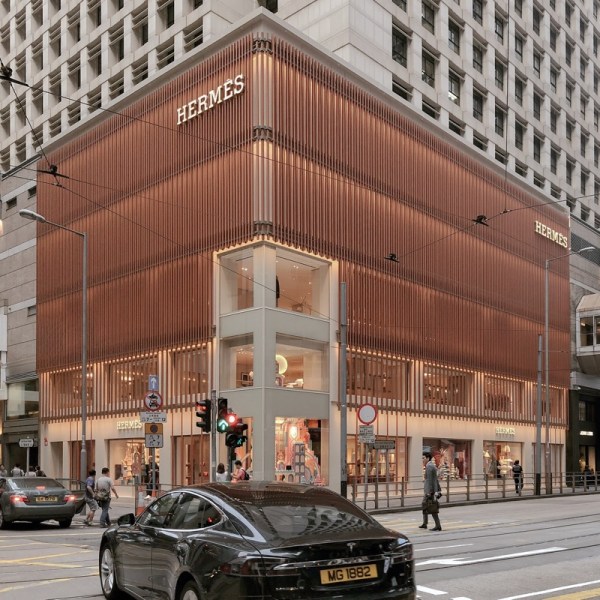

So, to really dive deep into it all, because I am not sure they’ve taken into account the true financial returns of these items versus the stock market.
I mean, just saying something was worth $300 in the past but $5000 now doesn’t really tell me much because it hasn’t taken into account inflation for one thing, and for another, the comparison between actually investing that $300 instead into the stock market and seeing those gains contrasted against it.
This goes the same for all ‘investments’, but consumer goods in particular, I take issue with being called ‘investment pieces’, because you buy the item without the idea that it is going to make you money, but perhaps, that the cost-per-wear will be low because you’ll use it often (a concept which I love!).
“Cost per wear” is not the same as “investment”, so you can’t use those words to describe what it is; they’re two completely different concepts.
I’ve decided to start a little luxury bag series to note their prices in the past, what they are today, along with some fun style history because … this is exactly the kind of thing I love to write about.
ARE BAGS INVESTMENTS?
Truly dislike the term “investment shopping”
I truly dislike the term “investment dressing” or “investment shopping” when referring to clothes, accessories, footwear etc. I do not truly believe that you can invest in any THINGS and expect it to go up in value, unless it is truly a rare piece or owned by someone famous.
Unless your bag is spitting out $20 bills each day, it isn’t an investment to me. It’s a gamble, a bet, a speculation, really.
Even art is like this – it isn’t an investment unless it is a rare piece or something coveted.
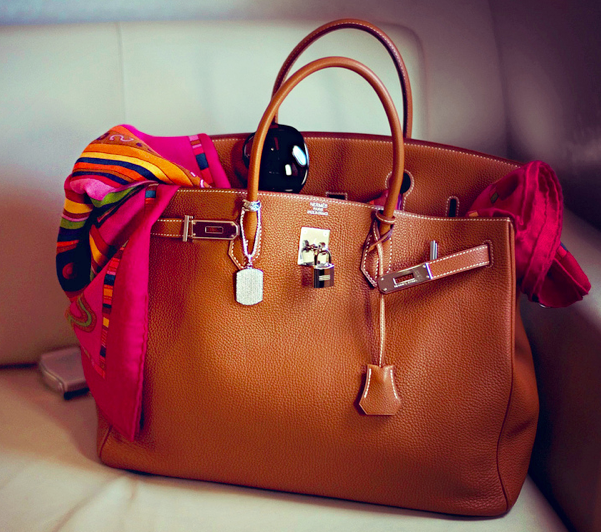

Cost-per-wear is not the same as investing
People may think that cost per wear is the same as investing and it completely isn’t.
Cost per wear means you buy something of a better quality with the intention of being able to use it more than if you bought a cheap item and had to replace it constantly.
Cost per wear also applies to things even like homes or elevators – buy a crappy elevator or a car and you’ll maintain that thing for years; buy something in a better condition or a better quality/brand, then you won’t have to re-buy it again or maintain it as often.
However, it is not the same as investing.
Investing means putting your money into something that will go up in value one day.
If you’re buying an Andy Warhol, you’re assuming that if you pay $1 million today, it will go up in value even next year to $2 million if you wanted to resell it.
There are very few consumer goods, collectibles, even art that fall into this category and they all usually have a storied provenance that makes them go up in value over time, either owned once by famous folks, or is super rare.
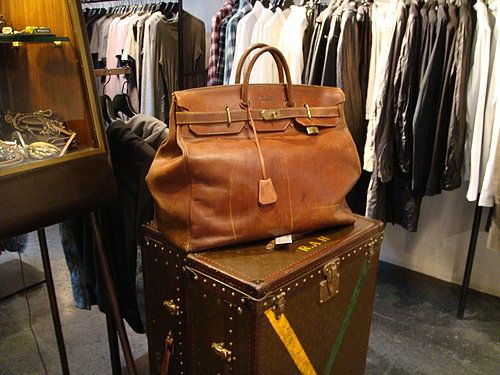

So what’s the difference?
If you’re trying to say that you’re “investing” in a piece so that you don’t have to buy another of the same in 30 years and it lasts longer than a cheaper item, that’s “cost per wear”.
A great $500 dress that you can wear for years to come, is worth more than a $50 one you can only wear twice ($25 per its 2 times worn)
(Yes, wedding dresses at $2000+ come to mind in this scenario… the cost per wear on those things are terrible but the sentimental/collectible aspect is fantastic.)
If you’re trying to talk about a piece as an investment — once you buy that piece, it has to be likely to go up in value.
Let’s say you buy the original Kelly bag owned by Grace Kelly – HUGE resale value here, it is a collectible.
If you buy a Kelly bag owned by some random no-name person, the resale value is not likely to be as high, or in the same dollar amounts (nominal versus real, when you account for inflation.)
In fact, that person might lose money on it, as it is “used”.
Value doesn’t equal price
Just because a bag goes up in price, it doesn’t mean it goes up in value.
I can ask for $5000 more than what I paid for a bag (PRICE), but what someone actually pays for it, is its value (VALUE).
They can ask for what they want (as can resellers), but what it sells for, is its true value.
All new bags, once purchased, are secondhand
We always have to take into account that a bag that is “new” and kept in pristine condition (e.g. never used, touched only with white cotton gloves), would definitely keep its value, but that doesn’t necessarily mean someone who paid a certain amount in the past will pay a retail price for a bag that is basically secondhand/used.
You’d also have to have all the serial numbers, cards, authenticities taken into account for it to be considered valuable.
One scratch and it drops in value.


Much like a car, once it is driven off the lot, it loses its value. *shrug*
Unless it is a vintage piece, owned by someone famous, a rare design, or an original piece, it is unlikely you’re going to “invest” in a bag and then resell it for more than what the present value of the bag would be worth today.
Or even if you look at houses or other investments – if you bought a house for $30,000 in the past and it is worth $400,000 now, it doesn’t necessarily mean it was a better investment (strictly speaking money), than if you just stuck that $30,000 into the stock market instead and let it grow over time.
The “used” factor
The only thing is that houses, stocks don’t have that “used” factor that limits consumer goods, because all houses tend to be re-purchased, gutted/not, and used again.
And stocks? They’re traded. So they’re all ‘used’. LOL.
In contrast, consumer goods and collectibles, have a “used” factor that plays either for or against them.
Used by Coco Chanel? HUGE EXTRA RESALE VALUE.
Used by Sherry? No extra resale value (unless you’re a stalker…)
The Resale Factor
THAT is something worth exploring and what I do in this series — some bags, do keep their general resale value better at 75% to 125% of what they were originally purchased for.
That STILL doesn’t mean they’re investments however. It just means that even when used, they don’t drop MUCH in value (but you’re expecting a drop).
In general, aside from a few items, we can safely assume that most things are NOT collectibles when purchased under the guise of ‘investment shopping’, and are not likely to be resold for more than what it was purchased for, taking into account nominal and real amounts.
A bag from Zara let’s say, costs $50. If you use it ONCE and go to resell it, you’ll maybe get $15 for it.
A bag from Chanel, costs $5000 let’s say. If you use it ONCE, keep it in pure condition even with stickers still on maybe and go to resell it, you’ll get maybe $4000 for it if you sell it pretty quickly/if there is a demand, etc.
It only “lost” 20% of its value versus the Zara bag losing 70% of its value.
But, even vintage bags, don’t sell for today’s retail price in stores; even in articles talking about “investing” in a Chanel flap bag, it says things like:
The good news is this—the design over the years has largely stayed the same and there are fantastic vintage Chanel bag finds out there, usually sold at a lower price than retail.
Hmm. What were you saying about these being an investment again?
No one is going to buy that same old, used Chanel bag from you for $5000 when they can just go to a shop and buy it new for that price UNLESS they are buying it for reasons other than for having the bag.


The only time that this could differ is if you can’t buy something new like an Hermès Birkin just by walking into the store and have to go on a waitlist – ah hah! But this is just Hermès choking the supply so the demand shoots up.
You can also hit goldmines (rarely) with controversial pieces like a Zara jacket that said: “I DON’T CARE DO U”, became a huge, rare hit on eBay when it was worn during a sensitive time by Melania Trump.
This consumer good, had you purchased it, could have been resold for much MUCH more than what it was worth, but how could you have seen that coming?
How is this any different versus housing for instance?
First, the reason why I take issue with people calling consumer goods “investment pieces”, because they are very unlikely to be able to resell it for more than what they paid for it taking into account inflation in today’s dollars.
That, in and of itself, already tells me it isn’t an investment. Possibly a collectible if it is a special piece, but not a real investment when you shop.
Second, when you buy something in a store, you’re generally not buying it with the intent of solely reselling it. You’re buying it to wear it, enjoy it, and then maybe resell it if you can.
Unless you buy something with the intent of only reselling it because you have the foresight that it will be worth something, it isn’t a ‘collectible’ unless there is also an actual market demand for it.
(Anyone remember Beanie Babies? SO HOT as a collectibles and then… disappeared without a whisper.)
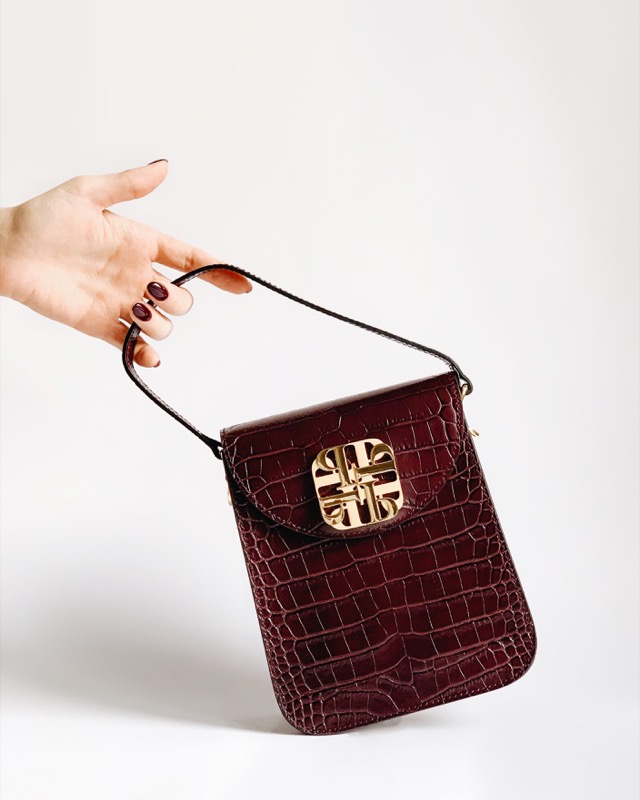

Third, if you buy a consumer good, it becomes ‘used’ immediately and worth less money, even if the tags are still on it, or you literally just drove it off the lot.
While this is just like housing (an “investment”) housing, true collectibles and stocks have no stigma of “it’s used, and therefore worth less”, attached to them; their values go up and down for different reasons and don’t immediately drop in value because they’re used.
Consumer goods including cars are 99% saddled with the stigma of ‘used’, AGAIN, unless they are collectibles (e.g. storied provenance, rare for some reason with an actual demand in the market for it, etc).
Just like with houses, but unfortunately, a house has a much higher chance of being sold to make more than what you paid (or rented out for income), than a purse.
Consumer goods are meant to be enjoyed!
What fun would I have if I bought a great vintage bag only to let it sit in its dust bag, untouched for years, only to look at it, and hope it returns a value?
RIDICULOUS! I want to hold the bag and wear it out!!
AND USE IT! All of which drops its value, naturally.
It’s like that Seinfeld episode about Jerry realizing his girlfriend had all of these cool original toys in their box, never touched or opened, and he goes through this whole internal struggle of wanting to play with the G.I. Joe and his frog suit.
In the end, he ends up drugging his girlfriend to knock her out, and then he opens all of her vintage toys and plays with them, much to her horror when she finally awakes and realizes he has ruined the value of them.
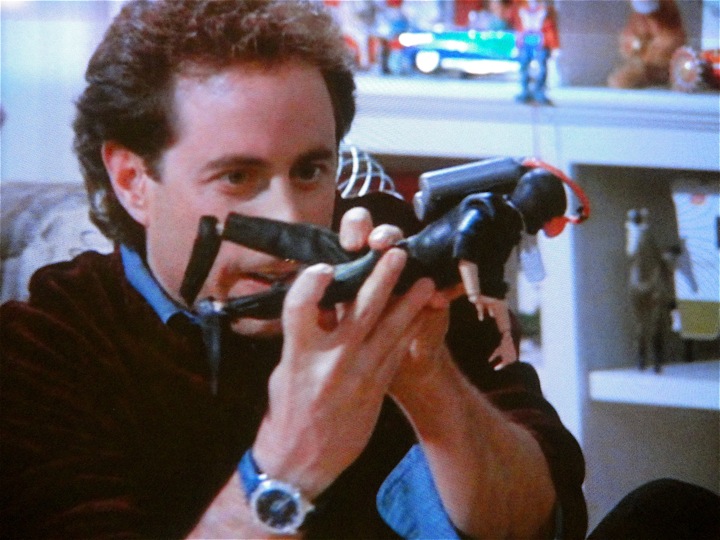

In this case? I am Jerry.
I don’t want to just keep things to admire them.
Or, I’d try to buy bags as historical fashion pieces
If I buy a designer bag, or a vintage one, it is a piece of history to me.
It is a collectible that I gain pleasure out of, and enjoy just for it being what it is, not what it is worth or its resale value, and that’s the real bottom line.
I will buy it because I enjoy it, not because it will very likely be worth more in the future, which is what an investment is.
Even bags purchased in the past, like a Chanel 1980s Jumbo flap – it was let’s say worth $1000 in 1980, and in 2020 dollars, would be $3000 today.
Even if I paid $3000 for it today, and the seller got that amount after fees, they basically just broke even.
They made zero profit off it. Their ‘investment’ earned them $0.
They didn’t make money but they also didn’t lose it. They may have been better off putting that money into a high-interest savings account in 1980 than buying a Chanel flap bag.
The resale value was great = they didn’t really lose any money on a used bag!, but as an ‘investment’, it was a terrible one compared to where else they could have put their money.
BUT! Therein lies the rub – they likely did not buy the bag with the intention of reselling it in 20 years; they bought it because they loved it and wanted to enjoy using it, and so they did.
To “keep” the value, the bag needs to have a lot of things going for it
- In new or like-new condition
- With authenticity card, serial numbers and receipt
- Original dust bag or box
- Cachet/Popularity
Any loss of the above, results in a lower value unless it was a very rare bag like something that only one was made of, or the first of its kind, or if it was owned by someone iconic.
Lots of “It” bags have fallen off the radar:
YSL Muse (discontinued)


Fendi Baguette
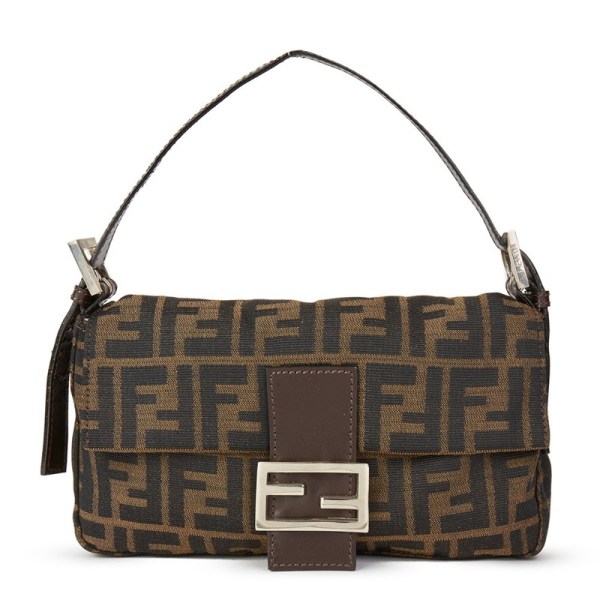

Reed Krakoff Boxer Bag
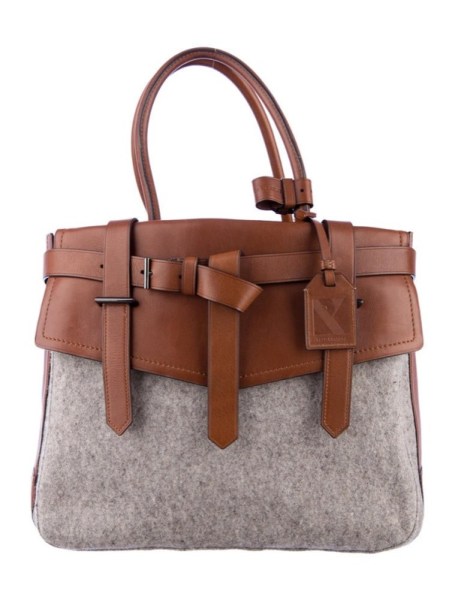

For various reasons, and mostly due to popularity, these bags are no longer carried around or seen photographed on arms of celebrities and their ilk, for various reasons.
Some of it has to do with just its functionality.
It is a little bit annoying to have a bag you can’t really carry around on your shoulder though it purports to be one.
Others, it is because it isn’t classic enough, or has too many bells & whistles.
Or, it isn’t big enough! What’s the point of a tiny bag that you can’t fit anything into?
I’ll go into more of these thoughts into each bag being shown but as you can see, the world of It Bags especially at these thousands-of-dollars price range, is a precarious one for brands.
So this series? It is PURELY FOR FUN.
Please don’t @ me and come at me in the comments.
I’m trying to do something different because I’m bored of talking about the same thing over and over again.


What if we invested the money instead?
I’ll also in each post under each bag, do a short little calculation of the same investment into the S&P 500 versus into the bag, using my friend PK’s S&P calculator including dividend reinvestments.
Normalized the bag prices to 2020 $USD dollar values
I took the original bag price at the time it was paid, let’s say $300 in 1955, and then I plugged it into this inflation calculator to obtain today’s 2020 equivalent value.
Then, I look at the price it was retailing at in stores, found the difference and that is how I located the “growth” of what the price should be today, taking into account inflation, and so on, and what it actually is in stores.
S&P 500 calculations are also done for the same year of the bag purchase
I also then took the same year, plugged in the amount invested and showed the side by side what you could have earned had you invested the money instead.
Why?
Because I am a money geek who loves style & fashion… ?
Spoiler Alert: Do they really outperform the S&P 500?
I think you and I both know the answer to this.
There is no better way to invest your money, than to actually invest it in the stock market and not into a consumer good that is reliant on fickle popularity, and demand for it.
BUT! This is for fun, and I am still greatly curious as to which iconic bags outperform which.
How did I pick which iconic bags to research for their ‘investment’ properties?
I chose what I have seen around on Instagram and blogs, but also what is still selling in stores.
The YSL muse for instance, was an iconic bag but they discontinued it so I can’t tell what the 2020 price would be for the bag today.


I also picked bags that I thought looked nice and relevant even for today, even if for some of them I wouldn’t actually buy them.
If people are actually into this series, I’ll do more / add more bags.
Tried to keep the same style of bag
So many things change the cost of the bag: Size, type of leather, hardware, details, etc.
I tried to keep a similar sized bag across the years, looking at the price and then converting it to today, but again, a lot of designers introduce one style, then get rid of it, or expand it and rename it…
Kind of a headache but I persevered!
Prices of bags are hard to come by…
I really wish I had vintage magazines because to know what the prices were, I had to search on forums, and old blog posts where bloggers THANKFULLY SOME, had posted what the price was at the time.
From there, I inputted it into a spreadsheet, did my calculations and did my best.
Only one bag, the Lady Dior, escaped me for its price in 1995. The earliest price I can discern is 2013, as 1995 was still when the internet was kind of in its baby stages, so information is not as available.
I would also appreciate it if people did know the actual values and could correct me / help me. ?
List of iconic bags for the first round:
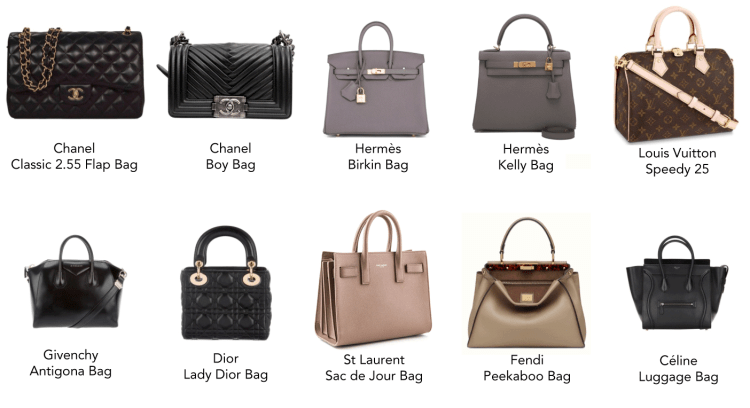

In no particular order:
- Chanel Classic 2.55 Flap Bag
- Chanel Boy Bag
- Hermès Birkin Bag
- Hermès Kelly Bag
- Louis Vuitton Speedy 25
- Givenchy Antigona Bag
- Dior Lady Dior Bag
- St Laurent Sac de Jour Bag
- Fendi Peekaboo Bag
- Céline Luggage Bag
If you would like to suggest a bag for me, let me know. If there’s an interest in this series, I’ll do more of these!
Stay tuned for the next post on the first individual bag from the list above.
—-
Loved this?
You can see the rest of the luxury designer bag comparisons in this series here: Luxury Designer Bag Series.
Related
Ten articles before and after
Luxury Designer Bag Investment Series: Chanel Boy Bag Review – History, Prices 2020 • Junyuan bags
In the world of Junyuan bags: The Favourite Designer Handbag Collection • Junyuan bags
What's in my purse or bag? 2020 Spring Edition • Junyuan bags
Sunday Shopping: A pretty, practical & professional lunch bag that isn’t ugly AF • Junyuan bags
My first (secondhand) designer bag purchase… • Junyuan bags
Waterproof Laptop Backpack craftsman tool bags




 Mobile/What's App/Wechat
Mobile/What's App/Wechat E-Mail
E-Mail ADD
ADD




